This is one in a series of posts on the Fujifilm GFX 100S. You should be able to find all the posts about that camera in the Category List on the right sidebar, below the Articles widget. There’s a drop-down menu there that you can use to get to all the posts in this series; just look for “GFX 100S”.
I’ve received several requests for a comparison of the Fuji 110 mm f/2 and the 80 mm f/1.7 with natural subject matter.
Here’s the scene I used, with both lenses:
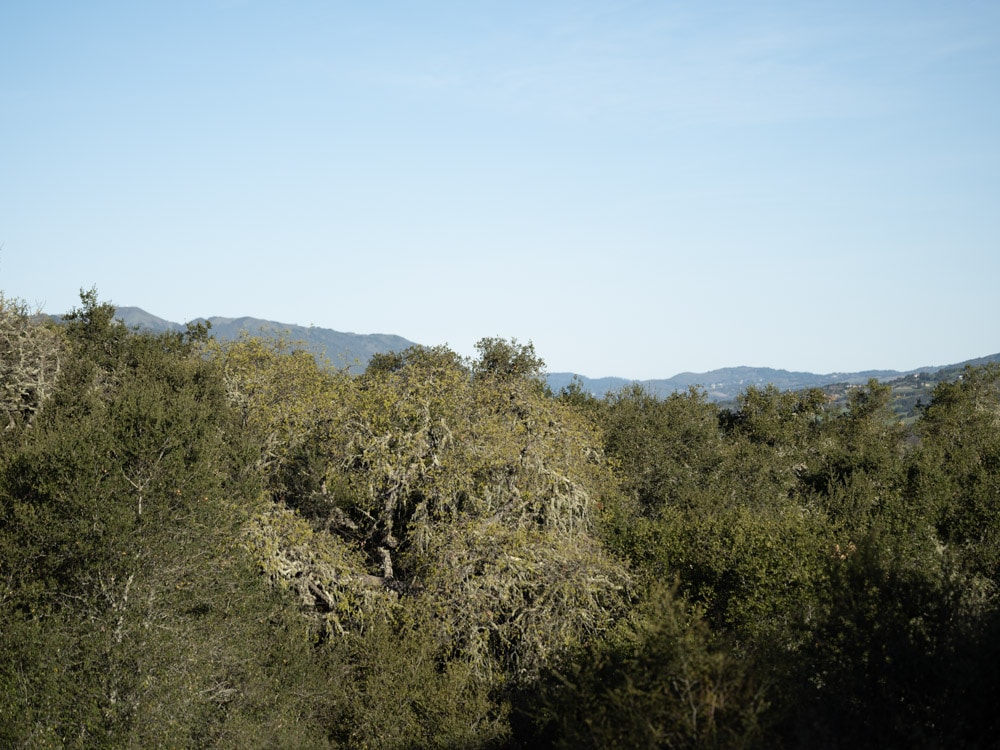
I set up the camera as follows:
- RRS 4-series Versa legs
- Arca-Swiss C1
- 2-second self timer
- ES
- ISO 100
- Manual focus at taking aperture for each shot
- f/1.7, f/2.8, f/4, f/5.6, f/8 for the 80
- f/2, f/2.8, f/4, f/5.6, f/8 for the 110
- 1/4000 or 1/3200, 1/1600, 1/800, 1/400, 1/200 second shutter speed
I developed the images in Lightroom with
- White balance set to Daylight
- Adobe Color Profile
- Sharpening: amount 20, radius 1, detail 0
I picked the sharpest of the three exposures. If you’ve seen these here before, just jump to the images. If not, I need to spend some time telling you how to interpret them. They’re at roughly 250% magnification, enlarged to 700 pixels high on export from Lightroom. If you just want a rough idea of the differences, just look at the images as displayed in-line in the posts. However, if you wish to compare these images in detail, you should view these images by clicking on them to see the source files, then set your browser for 100% zooming. Even better, download them and make Photoshop stacks.
No matter what you do, these crops are all going to look horrible. I’m blowing them up so much so that they will represent the original file after JPEG’s discrete cosine transform has had its way with them. If you want to get a good idea of what the images would look like printed, get far away from your monitor. No, farther than that. Put a bunch of the images up on the screen and back up until the best one starts to look good. Then look at the others. There’s another reason why these images won’t look like the best thing the camera/lens combination can deliver. They’re demosaiced with Lightroom. Lightroom is not awful, but for a particular image, there are usually better raw processors. I use Lr because it’s a de facto standard, because I know it well, and because it’s got good tools for dealing with groups of images.
Here’s how to use these highly-magnified crops. The dimensions of the GFX 100 sensor is 11648×8736 pixels. If we make a full-frame print from the GFX 100 on a printer with 360 pixels per inch native driver-level resolution, like the Epson inkjet printers, we’ll end up with a 32.4×24.3 inch print. The 399×309 pixel crop you’re looking at will end up roughly 1.2×0.8 inches. Let’s imagine that you or your viewers are critical, and will look at the 32×24 inch print from about 24 inches (conventional wisdom is that the distance would be a little greater than that, or 40 inches (the diagonal), but you did buy a high-resolution camera for a reason, didn’t you?).
The next step is dependent on your monitor pitch, which you may or may not know. Turns out, you don’t have to know it. Just take the crops and view then at 1:1. How high are they? Get out your ruler and measure, or just guess. Let’s say they are 6 inches high. 6 inches is about 6 times 0.9, so in order to view the crops the way they’d look from 24 inches on the print is to view them from 6 times as far away, or 12 feet.
In the center, at a distance of about 100 meters:
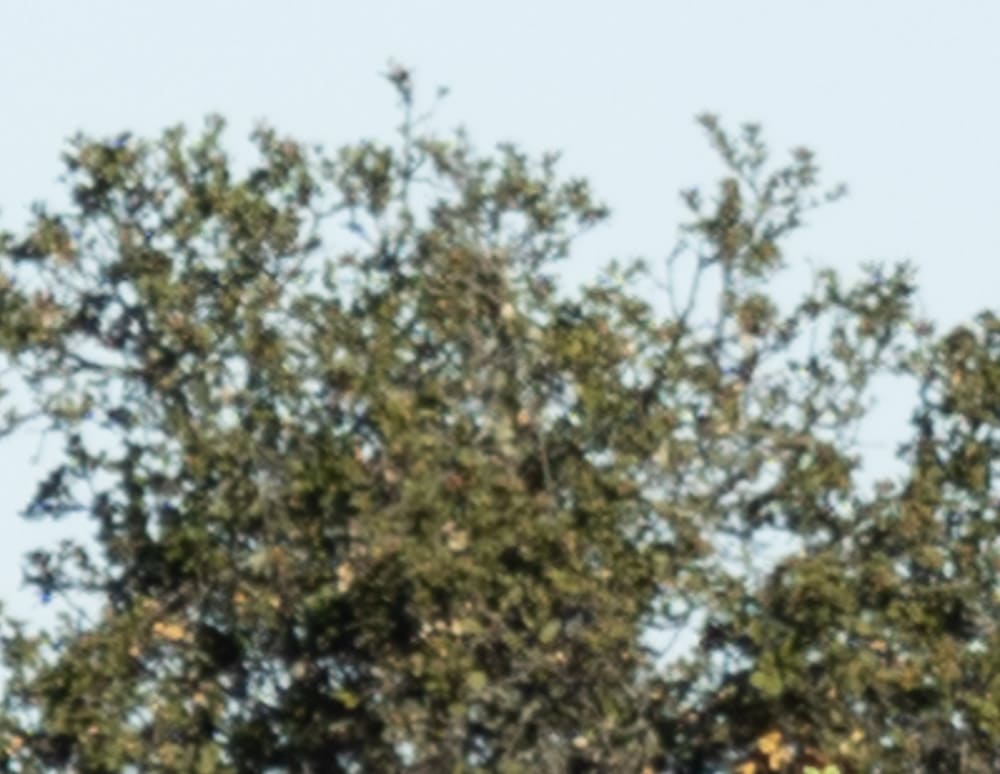
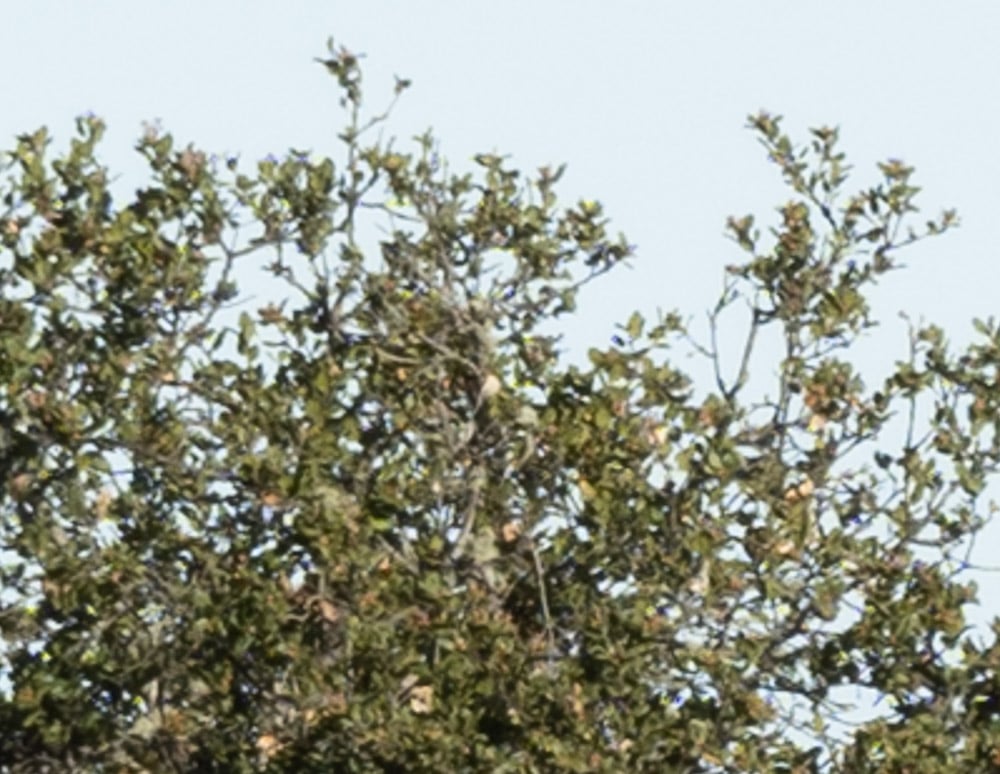
Wide open, the 110 is much sharper. You can also see more LoCA in the 80 mm shot. I didn’t test the 80 at f/2; I probably should have.
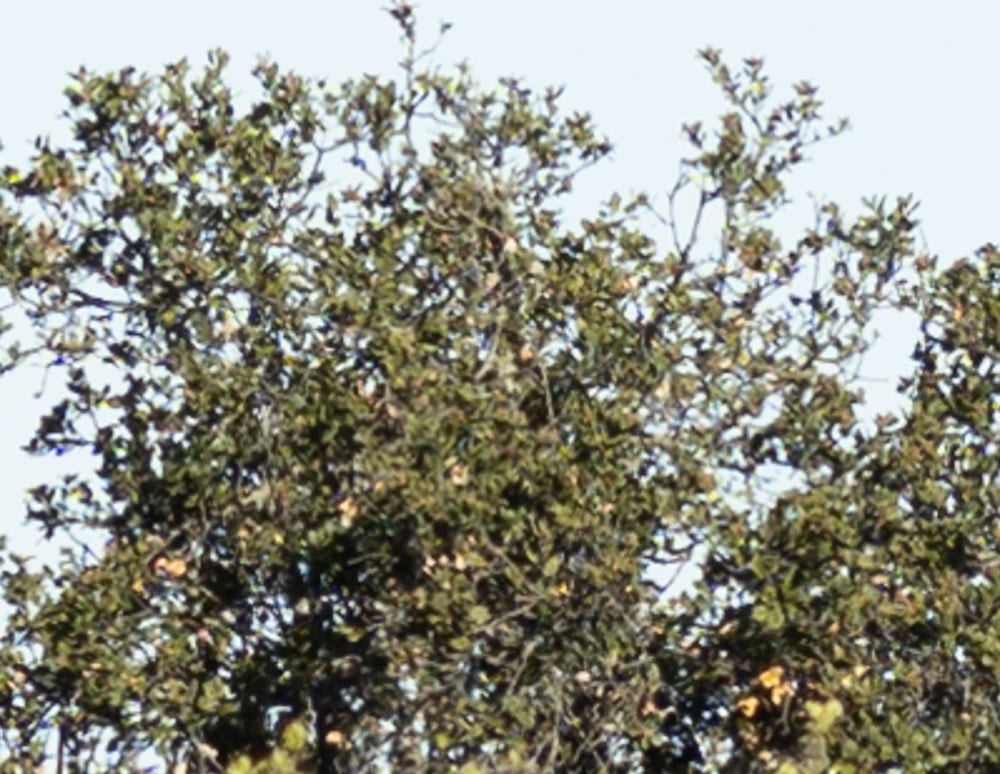
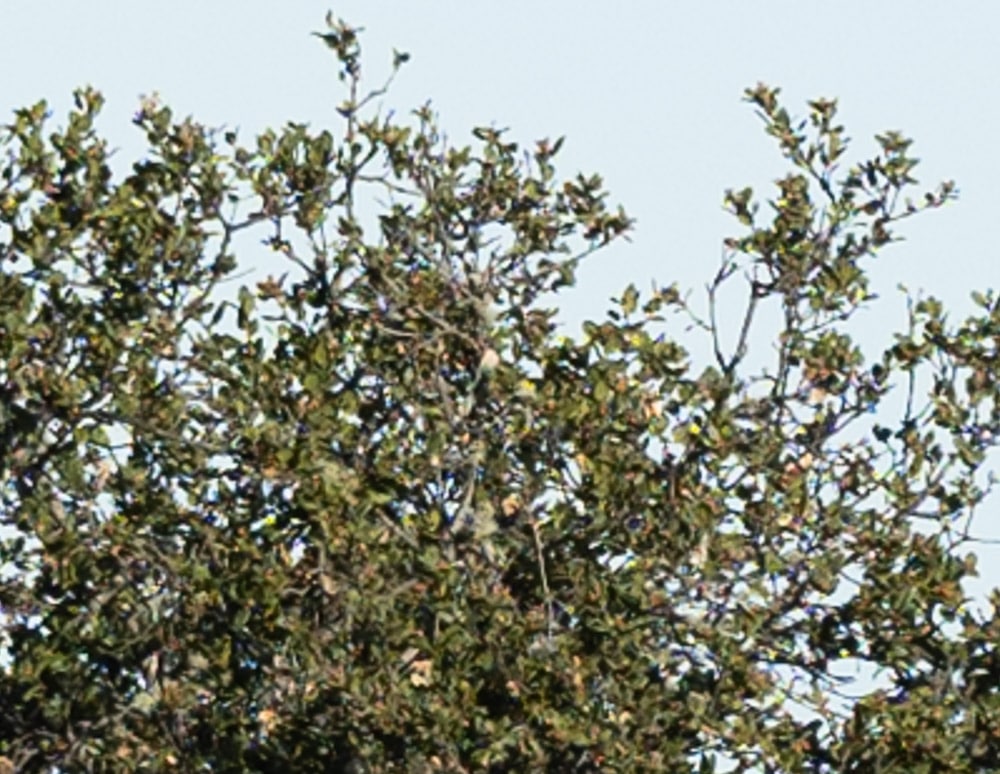
At f/2.8, the 80 is a match for the 110.
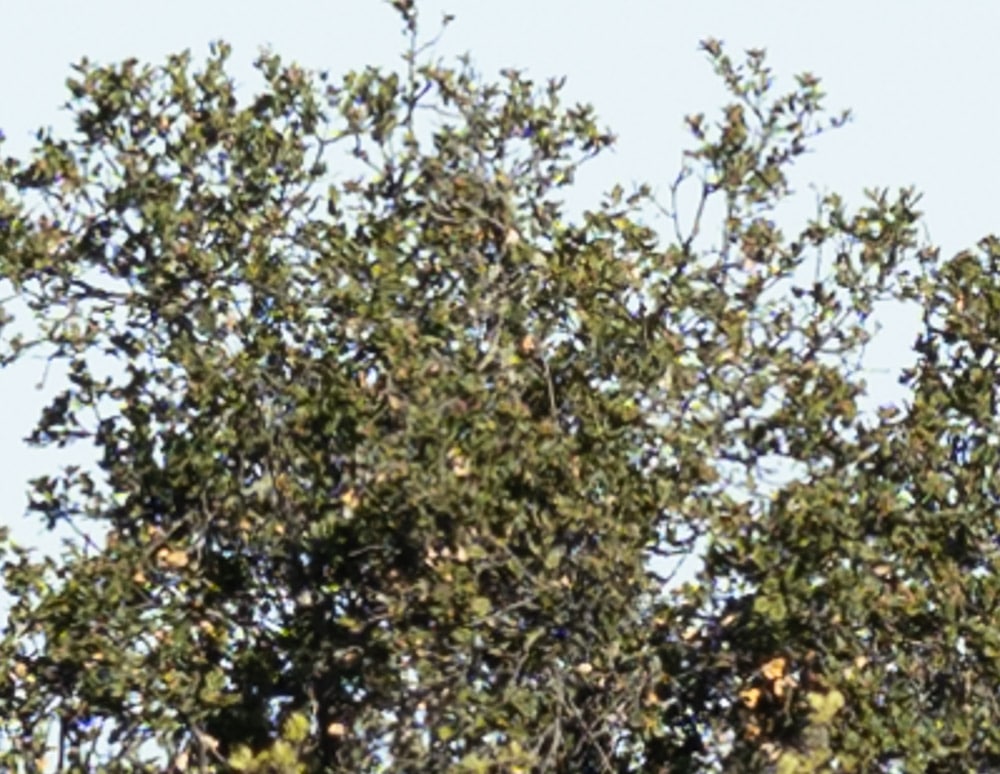
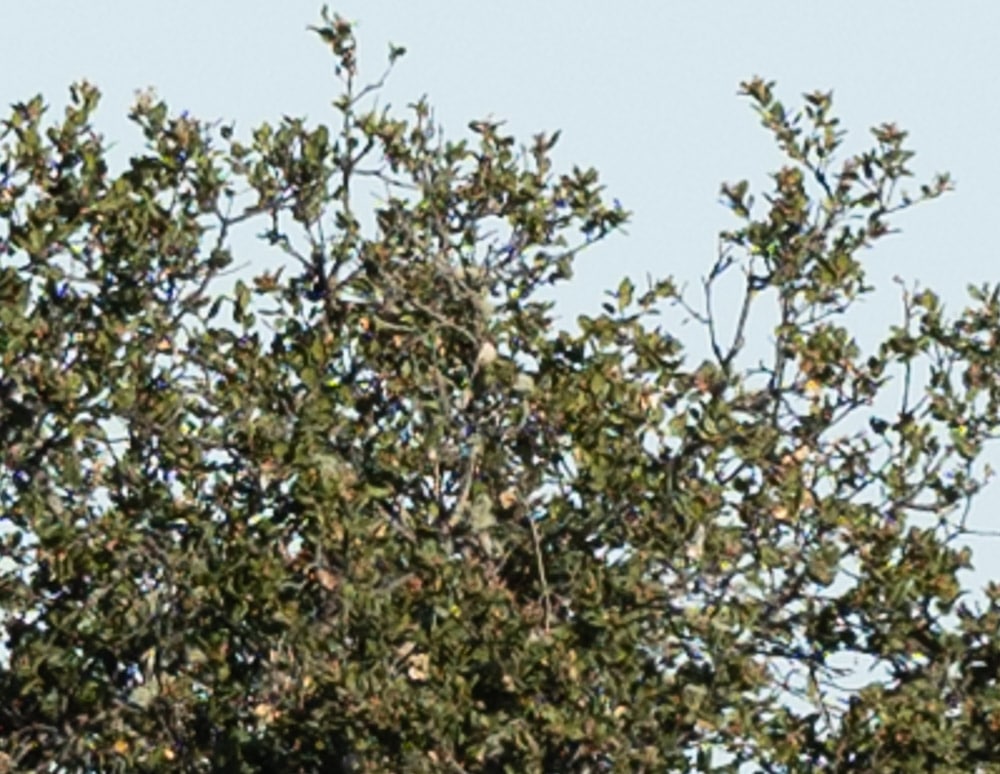
These are both very crisp.
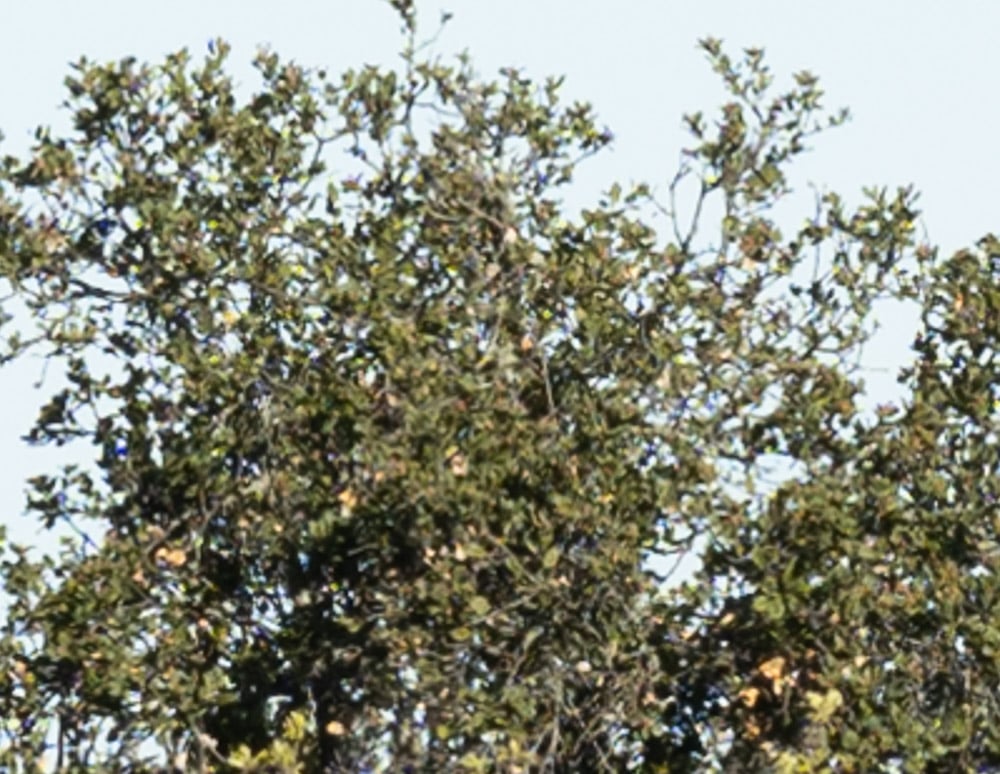
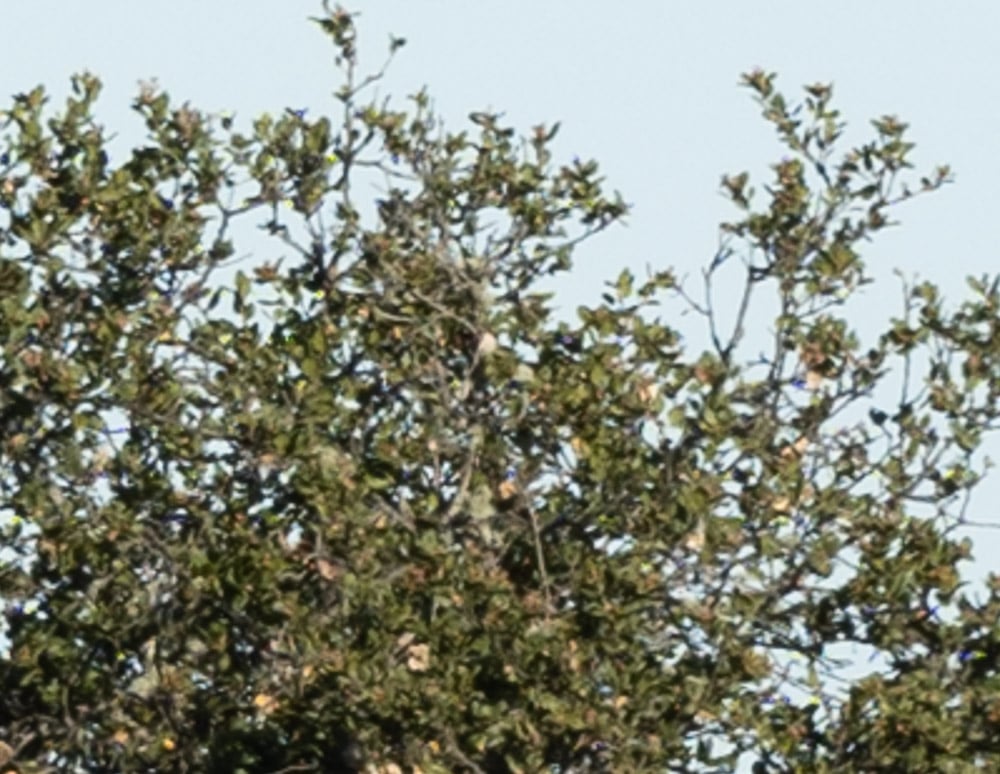
So are those.
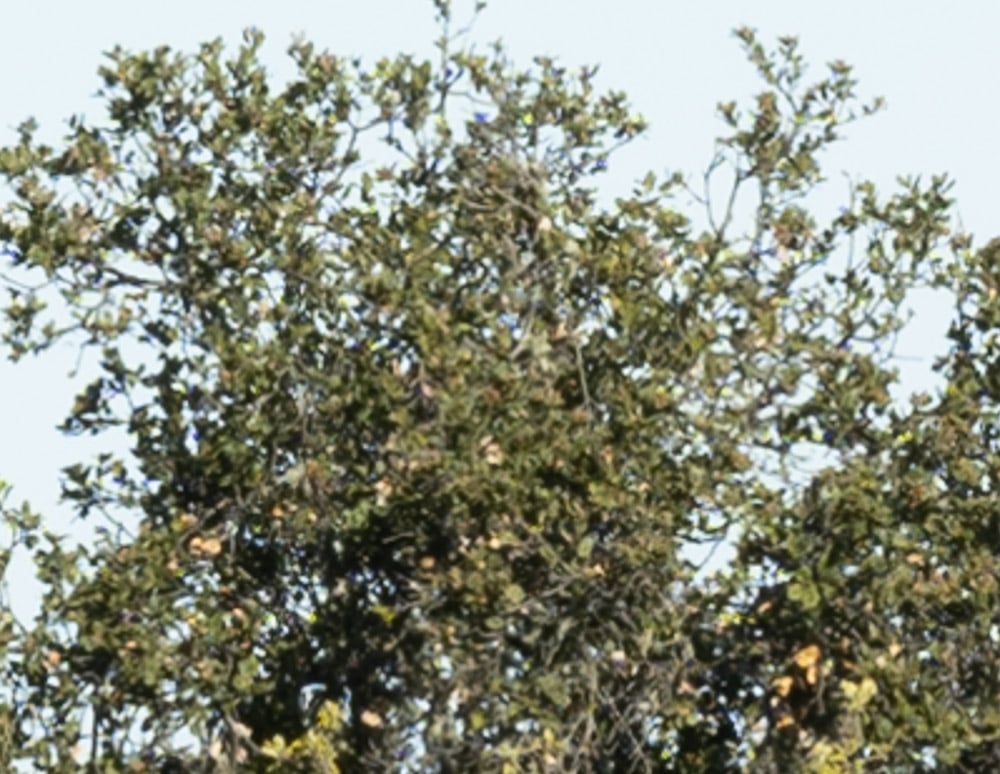
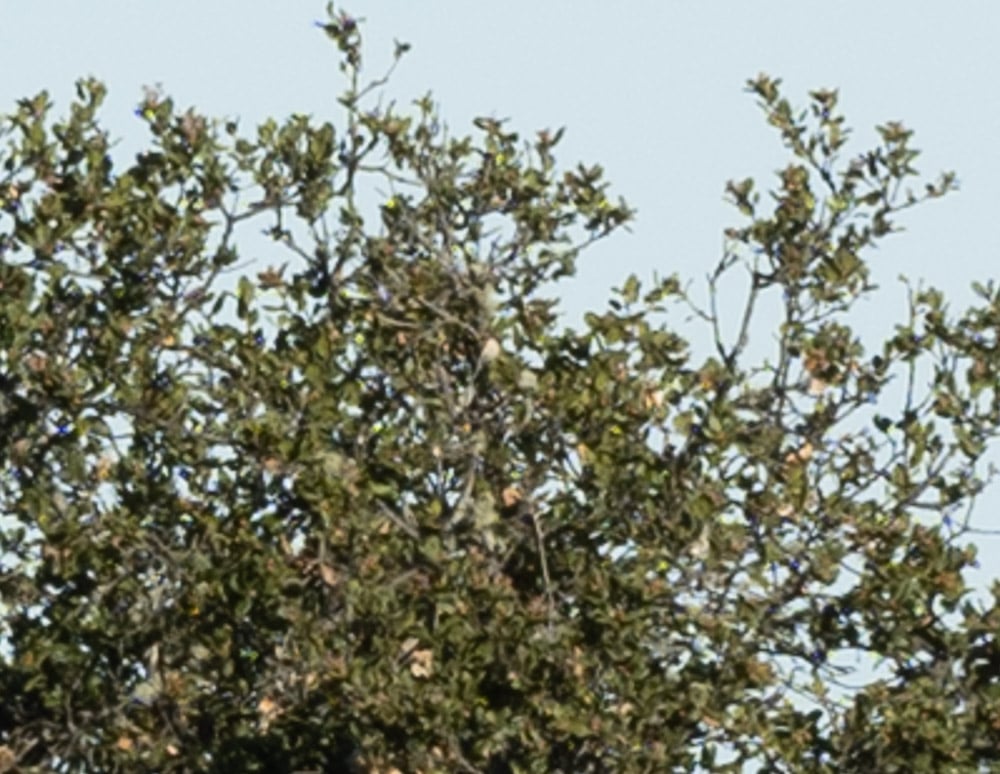
F/8 costs some sharpness with both lenses.
In the upper left corner, focused in that corner for each shot.
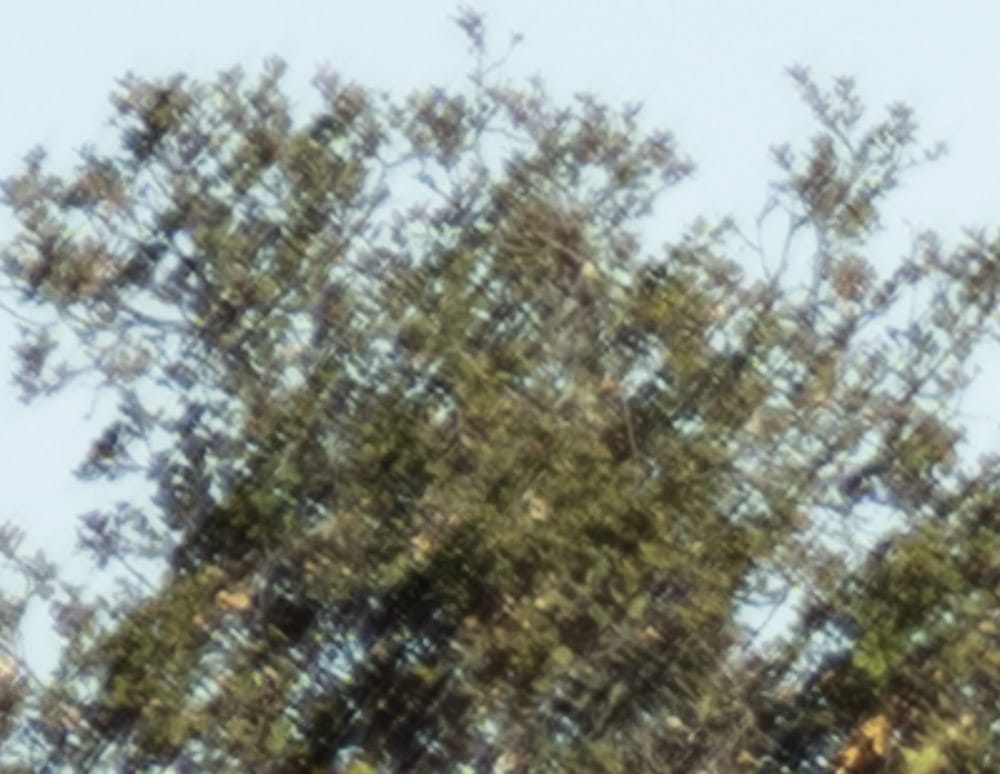
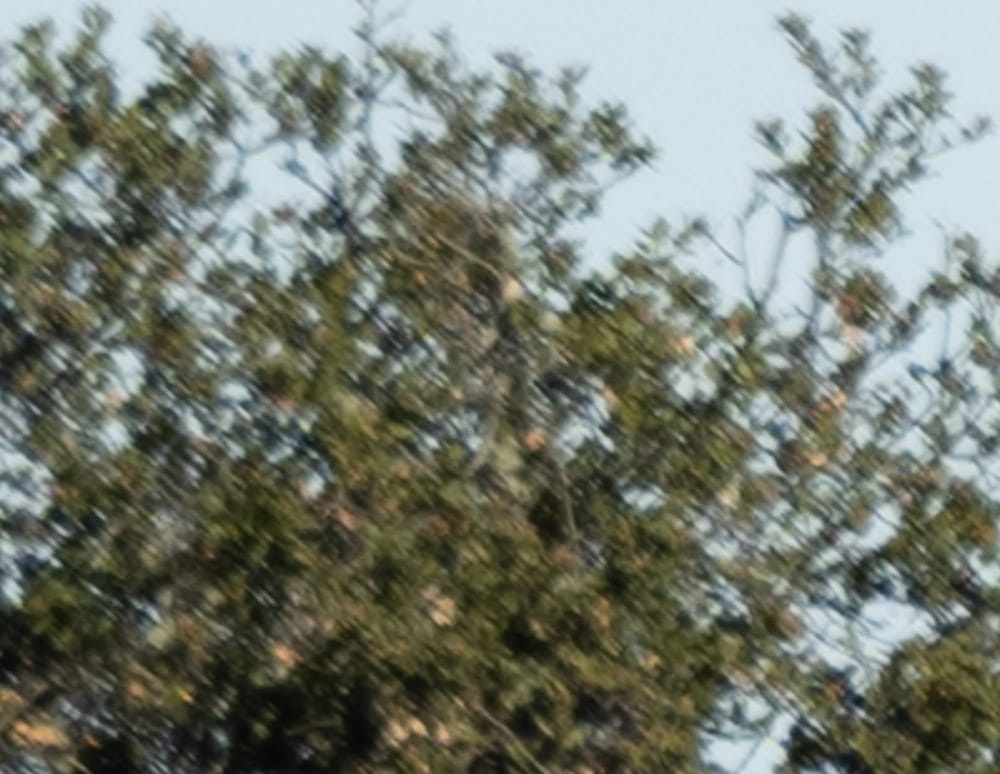
Neither lens is going to win any prizes for corner performance wide open. The 110 is better.
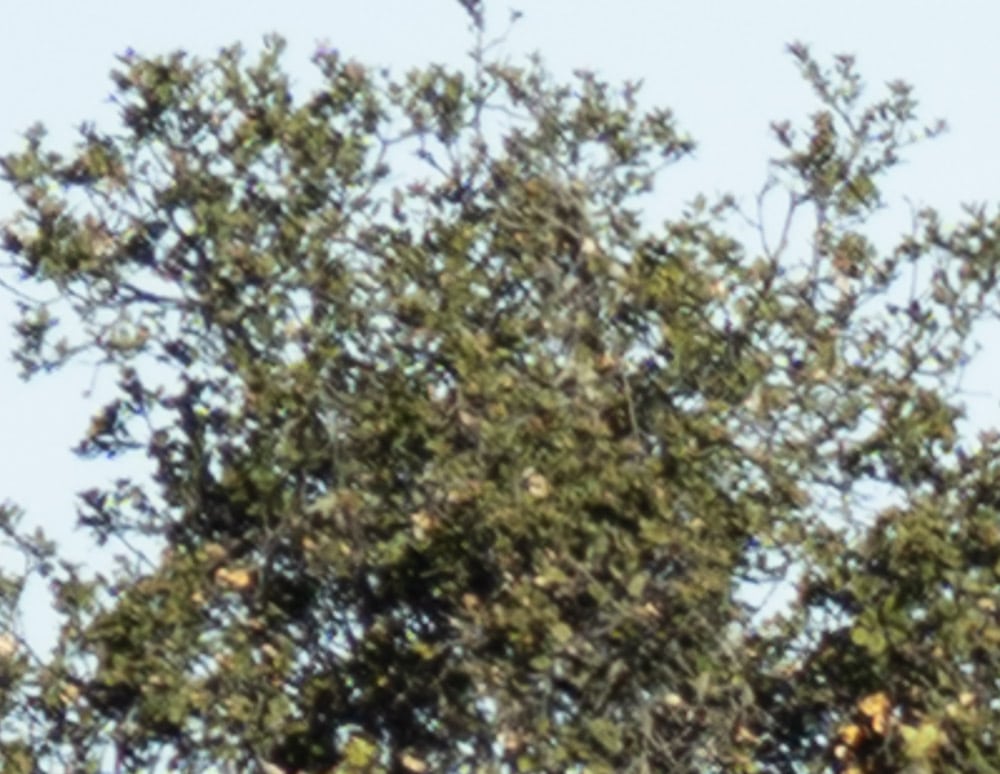
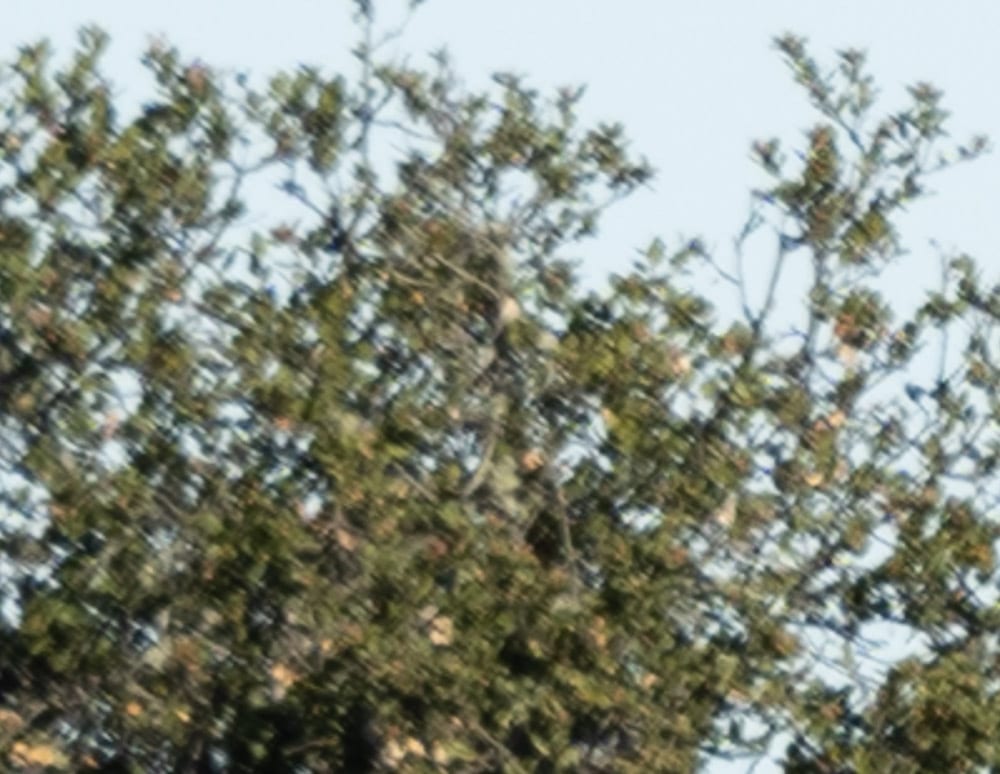
Now the 80 looks better.
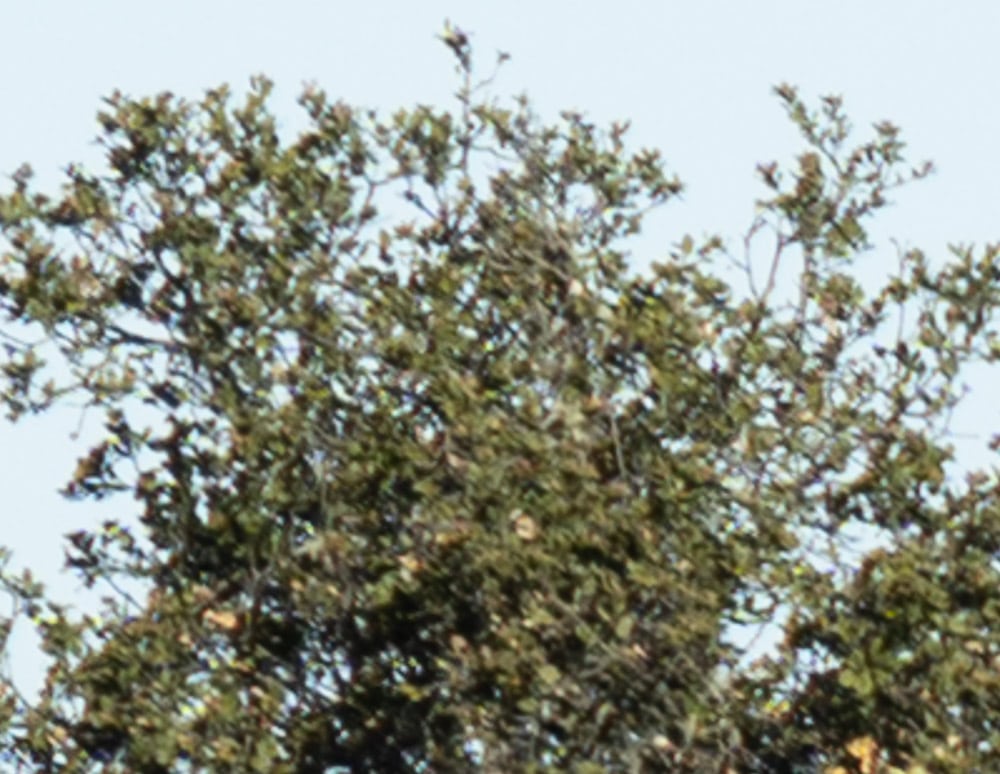
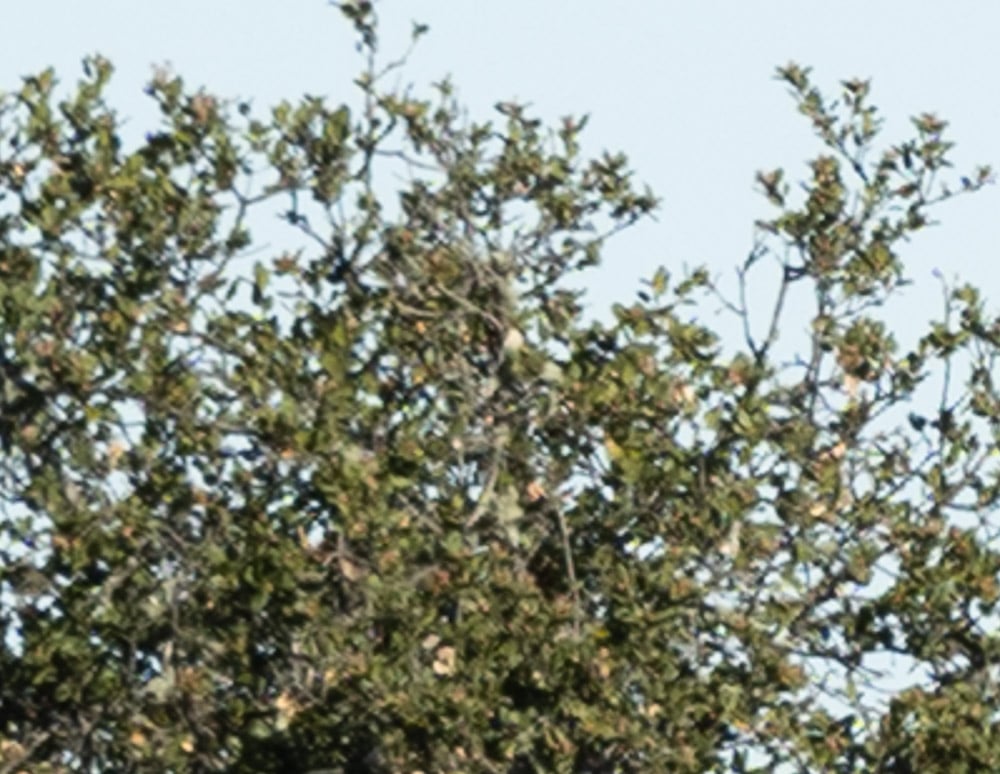
At f/4 we’re getting some pretty credible performance from both lenses.
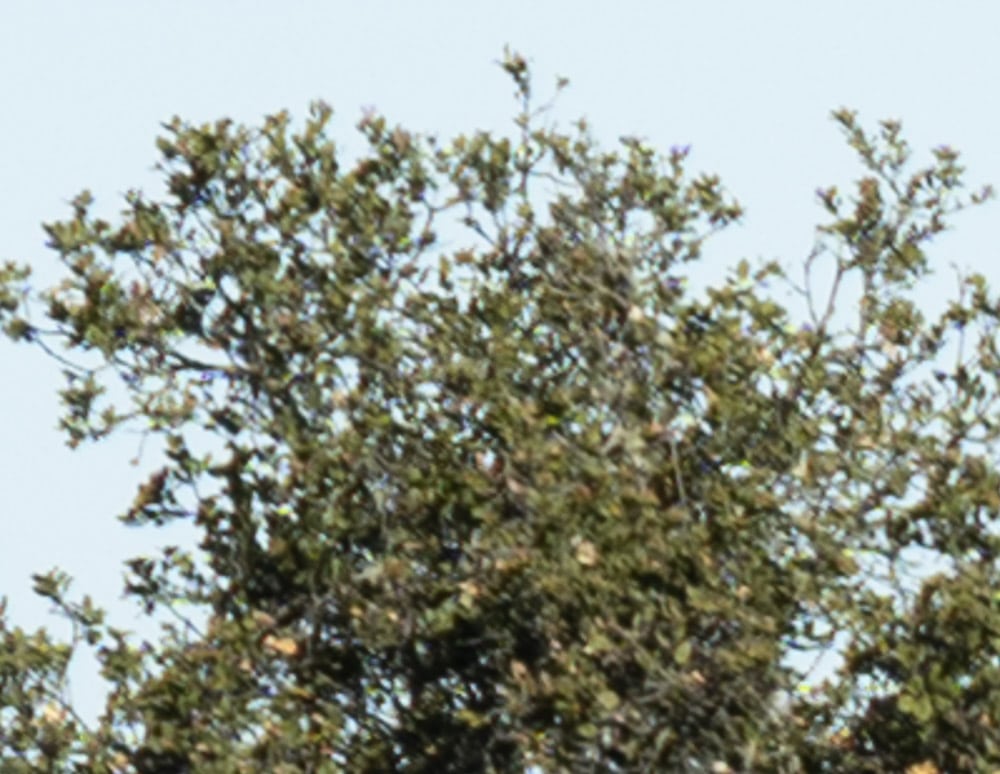
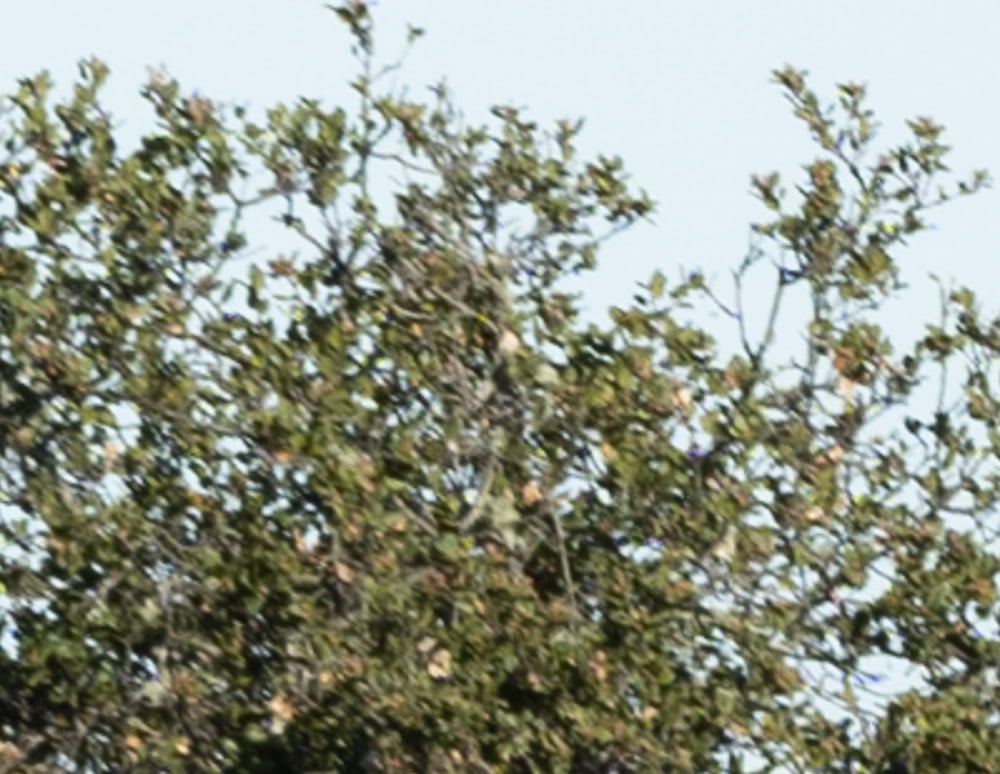
f/5.6 looks good, too.
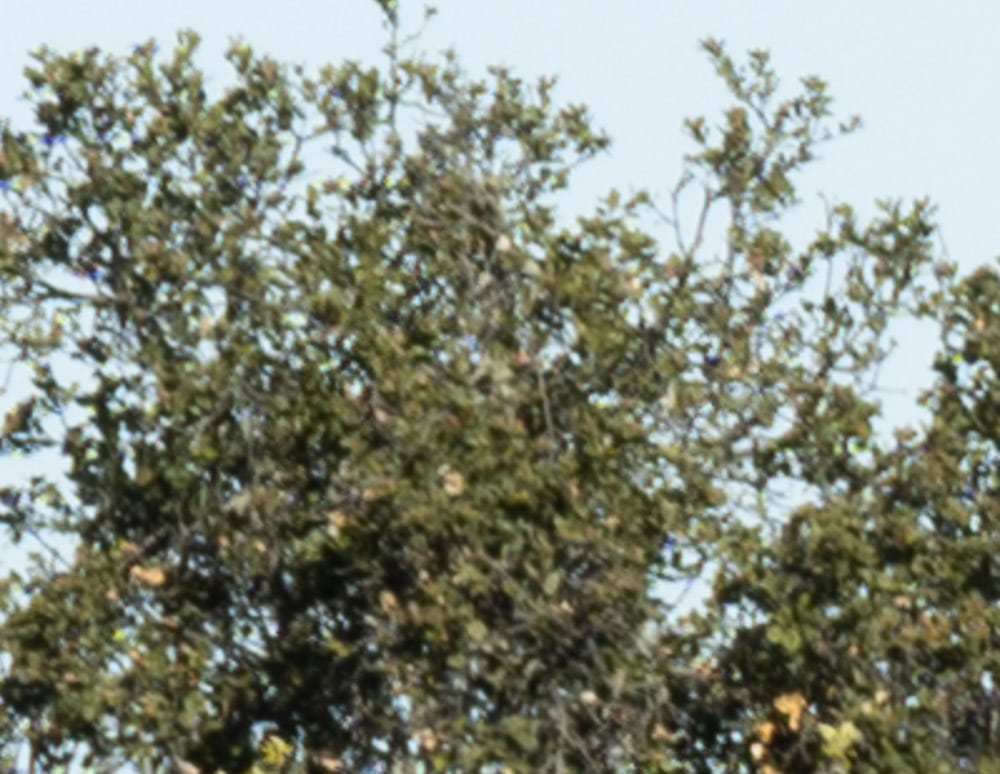
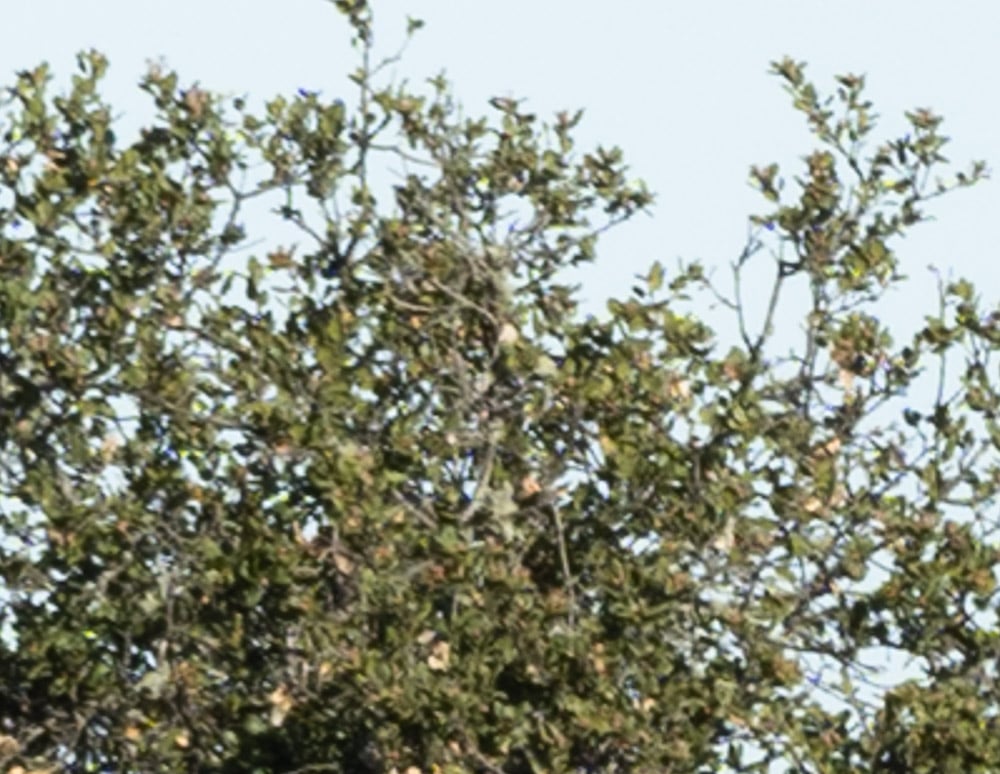
Looks like f/8 might have been misfocused a bit with the 80. I don’t see any reason why you couldn’t use the 80 mm f/1.7 as a landscape lens at f/4 or narrower. I also don’t see much LoCA stopped down with that lens here.
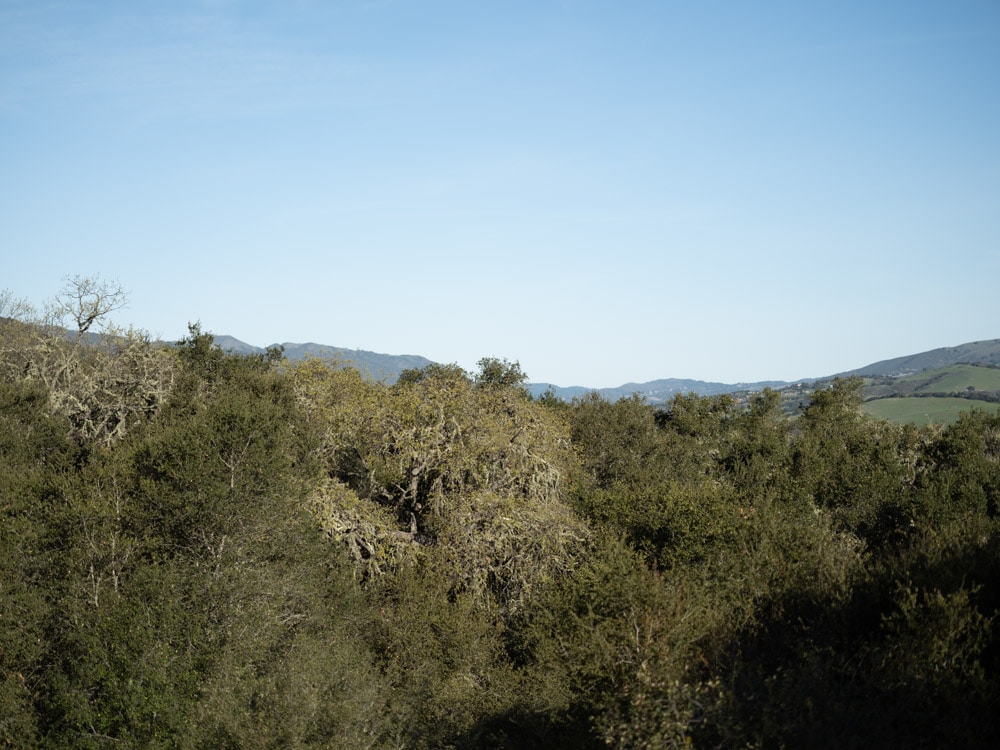
Joseph Holmes says
Hi Jim, if I were deciding on landscape performance, I wouldn’t (don’t) allow myself to refocus in the corner to see how it’s doing there (and the lens might or might not do about equally well in the other three corners to be sure), though it’s true that curvature is more readily overcome by stopping down than some of the other bugaboos. I would consider compromise focussing in actual use when I know a given lens has curvature, but for my testing I do all focussing on axis and seek to reveal just how it will perform on flat subjects at close to infinity in the most straightforward use case.
I’ve always loathed blurry corners stemming from optical performance limitations and didn’t have to deal with much of it using view camera lenses, largely on account of their far more ample image circles. The hints I’d picked up on recently suggested that the 80 f/1.7 did worse in the corners than the 110 f/2, but with refocussing to eliminate field curvature that situation seems, based on your very interesting single-corner comparison, to have been reversed.
I find curvature of field to be the #1 enemy of good performance for landscape lenses given my particular desires — which I suspect are widespread among landscape photographers. At least that seems to be the case with most of the more recent designs. Meaning that these days a lot are very highly corrected for other aberrations but not as much for curvature. Most of the time smaller apertures are fine for daytime landscape work, and cover up a lot, but a few years back I started to get the bug to attempt some starry skies, and talk about radical changes! The precision required to keep exposures workably short is of course vastly greater. I decided not to accept any lens that wouldn’t nail the corners at 2.8 and preferably closer to 2.0. That’s a rare breed at best. For daytime work, I’ve considered success at f/8 to be particularly outstanding, since moving to digital capture. If a zoom, for example, can’t succeed for daytime work by about f/14 at the worst, I’ll reject it (four good corners being my #1 measure of success for most kinds of lenses).
My recent and ongoing examination over the last couple of days of four GF 32-64 lenses shows plainly that curvature is the #1 problem with this design. If curvature is ignored, I think I saw at most two funky corners suffering from other aberrations out of 12 corners per lens (32, 45, 64mm), i.e. about 2 out of 48. But curvature effects were substantially damaging in more like 37 out of 48 corners, requiring stopping down to roughly between f/11 and 14 to overcome malfocus without compromise focussing being used.
At least two of the four copies and probably all four exhibit moderate reverse curvature at 32mm, corners focussing further away instead of closer. Then forward curvature is strong at 45 and 64mm. Today I hope to check whether the two better of the four copies are essentially flat at 37mm as I’m guessing they will be.
A different two of the four are excellent at 32mm and likely even better at 37mm (could even be used wide open for flat subjects sharp corner to corner at a distance at 32mm). One is very good at 64mm (solid at f/11), the other three require more like f/14 to 16. None are better than decent at 45mm (solid at maybe f/14) and two of those are better than the other two. I’ve never seen two copies of a lens which weren’t readily distinguishable from one another and at this point I’ve done dozens of comparisons of multiple copies from several makers.
I think Canon and Cosina do the best manufacturing consistency among those that I’ve looked at. I don’t know yet whether Fuji matches their consistency, it’s possible but it doesn’t look so far as though they will do any better and possibly not quite as well. I haven’t studied enough Nikkors to know about their copy to copy variation or their overall average failure to meet the design potential. I’ve experienced a great deal of disappointment with Sigmas failure to approach the performance of their designs, which include several designs with great potential for f/2.8 excellence. Samyang/Rokinon is likely the worst in this respect (lens to lens variability) that I’ve seen. Mamiya wasn’t great for keeping variability tight, but some copies were excellent. Pentax does pretty well with consistency too. Sony and Zony seem to do OK, but I think not as well as Cosina or Canon. Take my generalizations with a grain of salt, given how complex a comparison this is and how many samples are needed to really know. My all time favorites are unquestionably the Apo-Lanthars. I have the 65 and the 50, but expect that actual copies of the 110 and the 35 would be just as stellar. As in unbelievably good right from f/2, if the camera’s sensor is parallel with the mount within 10 microns and the lens isn’t swung or tilted either. The GF 120, if focus shift is forgiven, would be in that league, albeit starting at f/4 instead of at f/2, based on samples I’ve found on the web (but not for flatness at macro scales, at which I have no data for the Apo-Lanthars).
By the way, I measured the alignment of my GFX 100S first thing (avoiding the lens being a variable by inverting the camera 180 without moving the lens) and calculated 6 microns of swing and zero microns of tilt, plus or minus about 4 for each. It’s a complex process and took several hours, having spent months working out the system for doing it. This is as good as Fuji promised and ideal for working as big as f/2.0. Super fine alignment! If only Sony could match it… My A7r II was swung by 45 to 50 microns and tilted by over 20 before I shimmed the mount to make it right to within 10. Three other copies that I and a colleague measured were all off by around 30 microns. Fuji promises “a few microns”. A regular sheet of laser paper is 100 microns thick. I strongly suspect that Fuji actually delivers on this degree of parallelism in the GFX cameras. My 645Z never felt at all crooked with any lens, which included at least one f/2.8 native Pentax lens, the 75 A, and several other native lenses of lesser speed. The Sony consistently focussed too close in the lower right with each of seven different lenses on it.
FWIW, from the samples I’ve seen, as good as the GF 110 looks, I find the character of the detail of the GF 120 at f/4 to f/8 (if focussed at the taking aperture as you suggest) to be more attractive, and rather stunningly attractive at that, but minor influences like the particular microlenses or de-bayering or sharpening used may throw the comparison off unfairly.
Thanks so much for getting back to your usual river of observations for the 100S. It’s my first new camera in several years and the most promising and capable yet, to be sure, so your observations are particularly exciting to see. Apart from learning its tremendously complex controls and settings, the camera seems to be the easy part. After this 32-64 I’m hoping the rest of the lens battle will get easier.
JimK says
Nice to hear from you, Joe. I’ll do a field curvature test on the 80/1.7. Speaking of view camera lenses, I’m loving the 180/5.6 HR Digaron-S on the GFX cameras.
Joseph Holmes says
Hi Jim, Wow, the data for the 100 and 180 Digaron’s is a sight to behold. The former at f/8 hits 60% contrast at 80 line pairs at the corners of a 33 x 44mm sensor. Wow. The 180’s curves are prettier albeit not quite as high. It’s been 13 years since I spent a lot of time studying all of the Rodenstock and Schneider lenses for medium format digital cameras. So you’ve figured out how to mount them on a GFX. Actually, the other day I was looking anew (here I am immediately contradicting myself) at some of the Schneider digital lenses and actually working out a combination of one of their helicoids and some of their extension tubes that could make them work on a GFX, the objective being to use one for camera scanning of 4×5 film. The outstanding lens for single-frame capture of a 4×5 film looked to be the 0.3X variant (one of four magnification options available) of the Makro-Symmar 5.6/120. Before that I was snooping around the Rodenstock 120 Apo-Rodagon G, thinking maybe it would be a real winner for the same use. I’ve had mostly very good experiences from Rodenstock. The 180 Sironar-N was the best lens, optically, that I ever had for my Technika outfit and the 150 and 210 were the next best. The 180 Rodagon was my enlarging lens of choice, preferring it to the 150 Apo-Rodagon on account of its more ideal falloff pattern for enlarging onto glossy Ciba material.
https://schneiderkreuznach.com/en/industrial-optics/lenses-v38-line-scan-macro-system
Well, sure enough, since yesterday I’ve learned a few more things about these four GF 32-64’s. I hadn’t yet figured out that what’s up with the shape of the zone of good focus across the field was that at least at the short end, e.g. 32 to 39mm, they focus far away in the central 40% or so, then around that is a big fat donut region of focussing closer, then farther away again in the corners, but not as far away as on axis, not quite. I didn’t find the lenses (I’ve been concentrating on two of them, one for me and one for a friend) to get flat at 37 to 40mm as I’d hoped. Still the big donut! But I also realized my favorite had significant tilt, so I measured the tilt and swing for each of the two. My favorite copy was tilted forward (focusses closer on the bottom edge) by 50 microns even. And it was swung by what seemed to be ~9 microns, focussing closer on the right (as seen in the viewfinder) but that may mean the lens is only contributing about 3 while the rest is the camera, per my earlier mention of that above. These are approximate values for sure, I can’t be precise to a very few microns, but I can get into the ballpark. The other lens was tilted by about 38, same direction, and swung by ~17 I think it was. At least the main components of apparent swing and tilt here (as measured right down the middle each direction only, and only at 32mm) has the main error in the best direction, but I may still shim the mount of my favorite copy by adding a 100 micron shim to the lower screw position and 50 micron shims to the middle screw positions (and none to the top), which ought to straighten it out pretty well, yielding a 50 mic un-tilt across the 33mm of sensor (the screws are about 69mm apart across the axis). One uses tiny stainless steel shims with a ~4mm OD and ~2mm ID from either Misumi USA or from McMaster-Carr or both. The latter are not in metric sizes and are much less precise with respect to meeting their thickness spec, which can be quite useful for finding in-between thicknesses, but 50’s and 100’s are easy (from Misumi). 10’s are so thin if you breath on them they might just blow away. Like thin aluminum foil.
I’m guessing you had that Digaron left over from an older setup. I see Rodenstock is discontinuing a lot of their lenses from that era. Not exactly budget items either, but I can imagine how well those two must do.
Thanks for doing the GF 80 curvature test. Modest curvature toward the camera at the edges, as is almost the ubiquitous direction. This donut that I’m seeing in the GF32-64 is reminiscent of only two or three other designs that I’ve seen that do that, which I can remember. One was a Fujinon 210 NWS for 4×5 and one was an older model of Mamiya 45mm for medium format. The 32-64 though has a fatter donut. I’m hoping I see calmer behavior from the GF 45-100’s which I’m hoping to see here before the rebate offer expires. Stock is low for the moment. Figuring out the shape of the zone of good focus can be a real challenge! It takes a whole lot of looking to see the invisible shape of it in any degree of detail.
JimK says
I’m adapting the HR Digaron using a Cambo Actus. I got it recently— it’s actually the Alpa branded version with the helicoid that I’m not using — for an infrared series I’m doing with the GFX 50R.
Joseph Holmes says
It actually crossed my mind that you might be using an Actus. I was tempted by one of them once upon a time as well. I’m assuming that the available IR sensitivity in a stock 50R is pretty minuscule, so you’ve had a modification done? Kolari Vision maybe. I’ve yet to try one single IR picture, at least not with any camera that doesn’t have a heat absorbing glass filter over the sensor. It does look like it could be fun, especially with glowing vegetation or nearly black skies and Utah sandstone. I only know of one picture that Ansel ever published which relied primarily on IR. It told the story that upon planning a trip to the South Rim of the Grand Canyon he knew how much of a problem haze from pollution would be and planned on defeating it by using an IR setup. There is a whitish tree betraying the method in the horizontal picture.
JimK says
I have a LifePixel-modded GFX 50R with a 720 nm filter, but I usually use it witha 830, 850, 0r 950 nm filter over the lens to get more deep IR and less near IR.
The big problem with the Actus is getting it to work on the GFX with short lenses. They need to be retrofocal.
Ansel had to deal with lots of grain when he was using IR film (the 8×10 would help with that). Luckily, these days we can do IR with no more noise than visible light work.